Japanese Carved Ivory Memento Mori Netsuke in the Form of a Skull
A Japanese Carved Ivory Memento Mori Netsuke in the Form of a Skull the Himotoshi to the Base with Signs of Wear
Unsigned
Old smooth creamy patina
Late Edo Period Early 19th Century
Size: a. 2.5cm high, 3cm wide, 4cm deep - 1 ins high, 1¼ ins wide, 1½ ins deep
Unsigned
Old smooth creamy patina
Late Edo Period Early 19th Century
Size: a. 2.5cm high, 3cm wide, 4cm deep - 1 ins high, 1¼ ins wide, 1½ ins deep
A Japanese Carved Ivory Memento Mori Netsuke in the Form of a Skull the Himotoshi to the Base with Signs of Wear
Unsigned
Old smooth creamy patina
Late Edo Period Early 19th Century
Size: a. 2.5cm high, 3cm wide, 4cm deep - 1 ins high, 1¼ ins wide, 1½ ins deep
Unsigned
Old smooth creamy patina
Late Edo Period Early 19th Century
Size: a. 2.5cm high, 3cm wide, 4cm deep - 1 ins high, 1¼ ins wide, 1½ ins deep
Skulls and skeletons have more than one meaning in Japanese art and culture. As in Christian religious teachings, Buddhism also stresses that all physical beauty deteriorates, that all life is transient, and so it is better not to be vain, but to seek spiritual growth instead. As well as acting as ‘vanitas’ skulls and skeletons also represent ghosts in Japan. Some netsuke artists carved them to demonstrate their mastery of anatomy.
Ex Private English collection
Japanese Carved Ivory Memento Mori Netsuke in the Form of a Skull
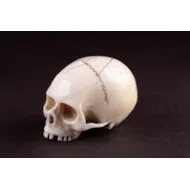
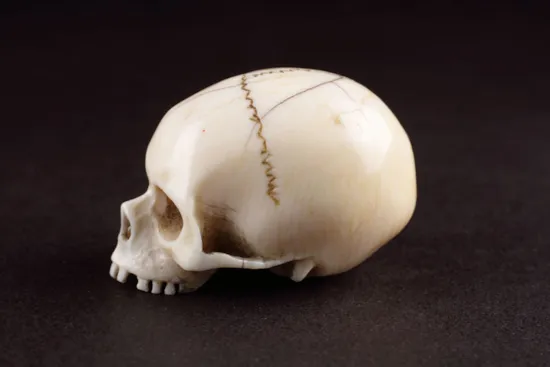
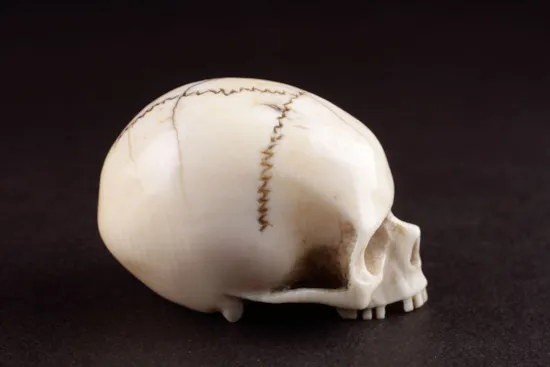
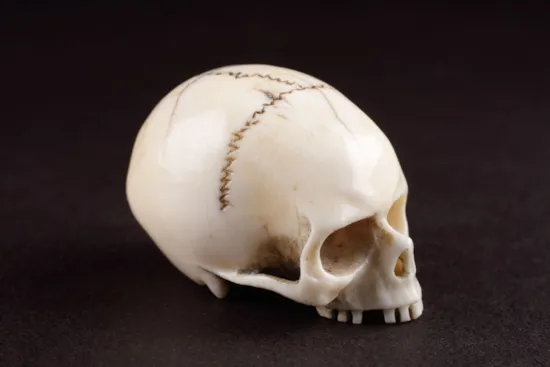
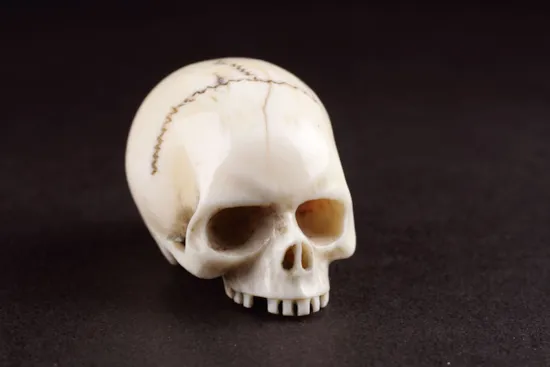
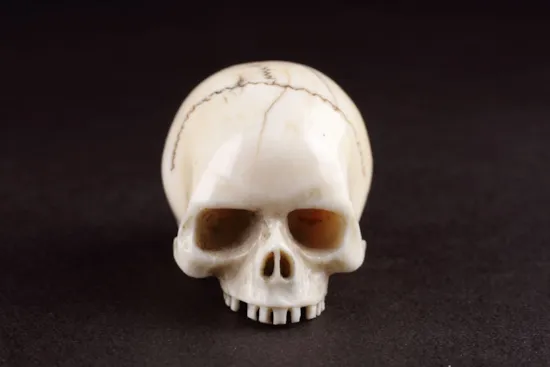
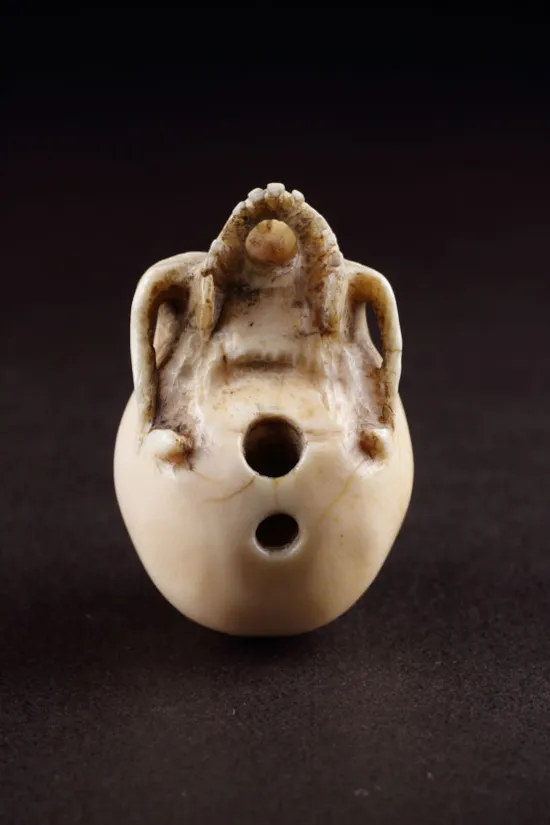






YOU MAY ALSO LIKE
A Very Rare Bronze Goblet Illustrating the Story of Prince Kunala
Late 2nd - Early 1st Century BC



